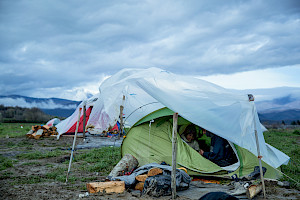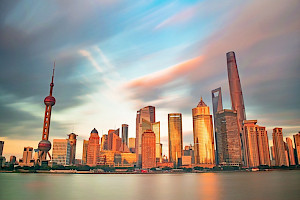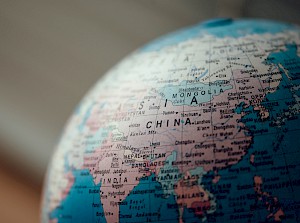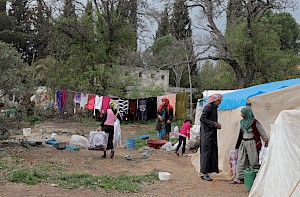In our fight against climate change, nuclear is emerging as a surprisingly popular carbon-zero fuel
July 19, 2023Originally published in The Toronto Star on July 11, 2023 as contributing columnist
Until recently, ramping up nuclear energy production as a way of achieving net-zero carbon-emission goals would have been met with antipathy. But opinions are quickly changing.
Charles Oppenheimer, the grandson of J. Robert Oppenheimer, the physicist in charge of the Manhattan Project’s Los Alamos Laboratory that created the atomic bomb (a creation he later regretted), wrote in a recent Time Magazine article that nuclear energy’s moment has come.
His reasoning includes an inconvenient truth: Despite all the growth and advances in renewable energy, we consume more fossil fuels now than ever before, and our CO2 production is increasing, not heading near zero.
The transition to renewables, such as solar and wind, has taken longer than anticipated, and there are still many challenges ahead. These include affordable energy storage capacity due to renewables intermittent availability, the amount of space required for infrastructure and its low efficiency.
Nuclear energy, on the other hand, has many advantages over renewables. First and foremost, nuclear energy produces zero carbon emissions. And according to a recent Bank of America report, it has many additional benefits over other energy sources including:
- A one-inch uranium pellet is equal to 120 gallons of oil, 17,300 cubic feet of natural gas and one ton of coal. Ten pellets can power a household for one year.
- Nuclear plants average an ‘uptime’ of 93 per cent versus 40 per cent for coal, 57 per cent for natural gas, 35 per cent for wind and 25 per cent for solar.
- It costs $122 per megawatt hour to build and generate nuclear power on an all-in basis compared to wind plus battery at $291 and solar plus battery at $413.
- A nuclear facility requires a mere 3.3 square kilometres versus 116 to 194 square kilometres for solar and 673 to 8702 square kilometres for wind.
Critics of nuclear energy also point to the high capital costs of nuclear plants, which is true. Capital costs range from $6- to $9-billion for each 1,100 MW plant. However, the payback as measured by the Energy Return on Investment (EROI) is in a league of its own. Additionally, nuclear power plants have a lifespan of 40 to 100 years, whereas wind farms and solar panels are replaced after 20 to 30 years.
Technology is evolving as well. The planned introduction of Generation III and Generation IV small modular reactors (SMRs) with enhanced safety systems are less prone to overheat and have higher thermal efficiency. Certain proposed Generation IV SMR designs can use different cooling sources, such as helium, molten salt or molten metal.
There are currently 437 reactors in the world with the U.S., China and France producing 58 per cent of global nuclear energy. That number could rise to 900 reactors if the current 100 approved and 325 proposed materialize. China alone has 15 new plants under construction and another 150 planned or proposed. India, Turkey, France and the U.K. are all exploring plans to build more plants. In Canada, where there are currently four active nuclear plants, the province of Ontario is planning a massive expansion of the Bruce Nuclear plant, already the world’s largest. Ontario forecasts it will need to more than double its generation capacity by 2050.
Only Germany seems out of step. Although polling suggested that only 25 per cent of Germans wanted the remaining nuclear plants switched off, the Greens in the ruling coalition got their way, and even after the start of the Ukraine war when natural gas prices went through the roof, the German government chose to shut down the last remaining nuclear plant and, in a move that defies all logic, restarted their coal-fired plants.
The global environmental community seems split about nuclear energy. Many environmentalists endorse it due to its zero-emissions feature. The people arguing against, or at least for greater caution around, nuclear energy, have a valid concern: safety.
The catastrophes at Three Mile Island, Chernobyl and Fukushima, has increased our understanding about how to manage certain safety issues, such as plant design and maintenance, and where plants should be built in the first place. And while there is no quick fix with respect to the storage of spent nuclear fuel, there are some promising examples of new thinking and progress in this domain, too.
Finland is about to introduce a revolutionary storage facility in two or three years. The cavelike facility, which lies 455 metres underground on Finland’s west coast, is the first of its kind to safely dispose of nuclear waste permanently. Spent reactor fuel rods, encased in giant copper casks are buried in the tunnel floor, the holes will be plugged with bentonite, a water-absorbing clay. Each tunnel will be backfilled with more bentonite and sealed with concrete. “You’re never relying on a single barrier,” says Emily Stein, who researches deep geologic disposal at DOE’s Sandia National Laboratories. “If one barrier fails, you have other barriers that can minimize or prevent radionuclide release.”
Frustratingly, critics have remained inflexible and mired in a “Three Mile Island” mindset even as the climate threat has evolved from urgent to existential, and the technology around nuclear energy has improved. Adding the aforementioned SMR’s into a future mix will also help alleviate those fears.
Russia’s war with Ukraine has illuminated the urgency of energy transition, and long-term energy security has become a global theme. As attitudes toward nuclear energy are once again turning positive, there is one more additional hurdle to overcome: the supply of uranium, especially for the west.
With the onset of Russia’s war with Ukraine, the reliability supply of uranium might be put into question.The US imports 12-14 per cent of its uranium from Russia. Combined, Australian- and Canadian-origin uranium increased from 29 per cent in 2021 to 36 per cent in 2022. But these numbers don’t tell the entire story.
Russia is the largest player of the global uranium conversion capacity, with 40 per cent of market. Its close neighbour, Kazakhstan, is the world’s largest uranium producer and it recently sold part of its large new Budenovskoye mine to Russia’s Rosatom, sending a signal to the market where it will align as the world order bifurcates.
The U.S. is almost completely reliant on imports of uranium, so it makes one wonder why the House Energy and Commerce Committee is discussing legislation that would prohibit allowing Russian low-enriched imports, the basic material used to fabricate nuclear fuel, into the U.S.
Following the Fukushima disaster, Japan moved away from nuclear energy, cancelling its long-term contracts of uranium and even considered selling its uranium stocks. However now, the country is signalling it wants to increase its nuclear share of electricity needs from a current eight per cent share back to 24 per cent by 2030.
All these developments have led us to an indisputable fact: a large supply deficit will eventually drive uranium prices much higher. Some estimates forecast worldwide uranium requirements in 2040 to be 250 million pounds. Current worldwide uranium production is estimated to be just under 135 million pounds U308.
“The increasing acceptance of nuclear power and plans to expand generating capacity come at an exceptionally challenging time for the industry,” said Treva Klingbiel, president of Trade Tech, a firm known for its expertise in the nuclear fuel cycle. “Reliance on imports of Russian nuclear fuel over the course of many years has left the industry woefully unprepared for a disruption to the current status quo.” It is paramount that Canada, the U.S., and Australia ramp up uranium exploration.
In our quest for a net-zero emission world we should, of course, aim for renewables such as solar and wind as the dominant source of energy and continue to invest in hydrogen technology. The Holy Grail of clean energy, fusion (the inverse of fission that doesn’t create radioactive waste), still requires overcoming some difficult engineering challenges. One key engineering challenge is the development of materials that can withstand fusion conditions for decades, such as extreme heat and neutron damage.
In the meantime, we need to be realistic and accept that achieving a net-zero world will require an intermediate transition from the dirtiest fuels — coal and oil — to the next best non-renewables such as natural gas and nuclear. The U.S. is fortunate to have an abundance of natural gas, but European countries, which relied too long on cheap Russian gas, will need to explore more aggressively domestically, both onshore and offshore.
Finally, we need to update the conversation on nuclear energy. We need all sides in this dialogue to come to the table, to revisit their positions, and to open their minds. The climate crisis demands it. And if we don’t do it in an intentional way, it will happen in a disorderly, chaotic way, that will do even more harm.
While we do not want to bequeath a radioactive nightmare to our children, we have already bequeathed them a climatic one that could get worse if we do not act today to diversify our energy use. For this reason, we need to make some tough choices, and put safe nuclear energy back on the table.










